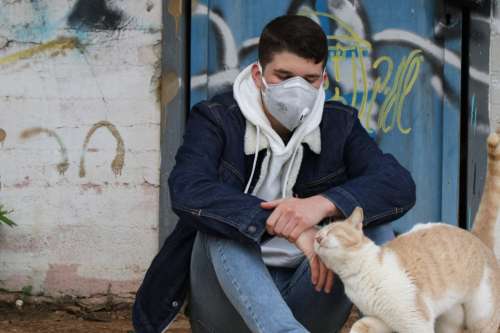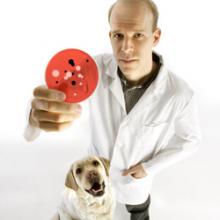
Physical distancing is not just for people but for pets, too, says a University of Guelph expert in zoonotic diseases.
With more people, including dog walkers, populating trails and sidewalks to get exercise and fresh air, Prof. Scott Weese warns we should avoid interacting with other people’s pets.
Weese, who is the chief of infection control at U of G’s Ontario Veterinary College, said it’s not yet known how common it is for cats and dogs to contract the new coronavirus, mostly because of limited testing. There have been reports of pets testing positive for COVID-19 in households with people who had confirmed coronavirus infections or who were in close contact with confirmed human cases.
This week, a tiger at New York’s Bronx Zoo tested positive for COVID-19. The animal is presumed to have been infected by a caretaker who had the coronavirus but was asymptomatic, Weese said.

Given the large number of people who have tested positive for COVID-19 and the large number of households in North America that have pets, we need to consider the potential for human-to-animal transmission, said Weese.
“This is still a very much predominantly human disease, but we can’t completely ignore the role of animals even if it’s small. We need to consider potential animal aspects of this disease such as human-to-pet transmission in order to help prevent pets from contributing to this human disease and to help avoid creating a domestic animal reservoir for this virus.”
To reduce the risks of the potential transmission from animals to humans, people can use simple and practical measures, such as not petting other people’s pets, keeping their own pets leashed outdoors and maintaining two metres between pets and others.
Dog owners shouldn’t let their dogs run off-leash with others at the dog park, added Weese.
“To me, social distancing is a whole household activity, not just a human activity. If I wouldn’t go and shake someone’s hand, why would I let my dog go see them, get petted, then touch that same spot right away. That might be the same as touching the person. The risk is probably very low, but it’s avoidable, and we’re doing all we can do to prevent avoidable exposures. Essentially you should ensure your pet is following the same physical distance guidelines as you are.”
Contact:
Prof. Scott Weese
jsweese@uoguelph.ca